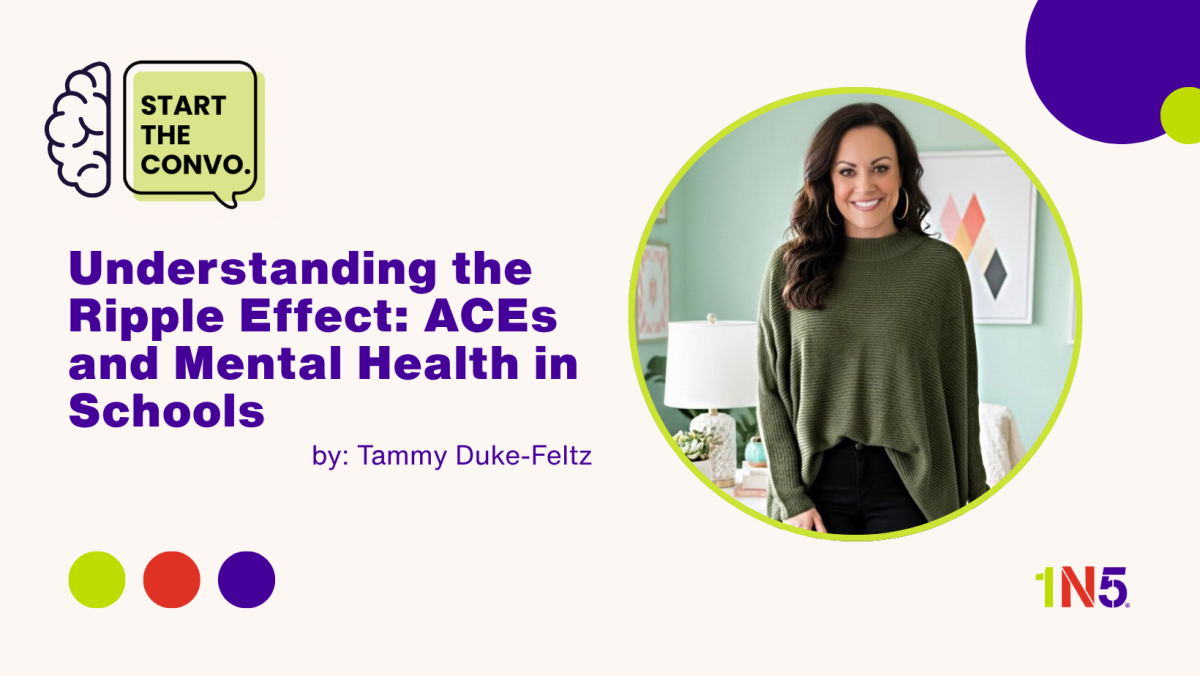This October, as we observe Mental Illness Awareness Month, my thoughts turn, as they often do, to the young minds I encounter every day as a school-based mental health provider. It’s a privilege to work with students, to witness their resilience, and to help them navigate the complexities of growing up. More than anything, this role has profoundly deepened my understanding of how Adverse Childhood Experiences (ACEs) cast long shadows on mental health, shaping a student’s journey in ways we’re only beginning to fully grasp. For those unfamiliar, ACEs refer to a range of potentially traumatic events that can occur in childhood, such as experiencing violence, abuse, or neglect; witnessing violence in the home; or having a family member attempt or die by suicide. They also include aspects of the child’s environment that can undermine their sense of safety, stability, and bonding, such as growing up in a household with substance misuse, mental health problems, or parental separation/divorce.
When I first started in this profession, I approached each student with a focus on their presenting problems – anxiety, behavioral issues, and academic struggles. Over time, however, a pattern emerged. Many of these presenting problems, I realized, were not isolated incidents but rather symptoms of deeper, unresolved trauma stemming from their early experiences.
One of the most eye-opening aspects of working with young people who have experienced ACEs is seeing how these experiences manifest in the school setting. A child who has experienced chronic neglect might struggle with forming secure attachments with teachers, leading to difficulties in group work or seeking help. A student who has witnessed domestic violence at home might exhibit heightened anxiety, a constant state of hypervigilance, making it hard for them to focus in class. And those who have faced abuse may internalize feelings of worthlessness, impacting their self-esteem and willingness to engage in school activities.
The impact of ACEs isn’t just emotional or behavioral; it’s physiological. Research has shown that prolonged exposure to stress in childhood can alter brain development and immune system function, leading to a higher risk of chronic health problems and mental illness later in life. This isn’t just about feeling sad; it’s about a foundational disruption that affects every aspect of a child’s well-being.
During Mental Illness Awareness Month, it’s crucial that we not only acknowledge the prevalence of mental health conditions but also understand their roots. For many of our students, addressing mental health means addressing the lingering effects of ACEs. It means creating safe, predictable, and nurturing environments within our schools that can act as a buffer against past trauma.
My role as a school-based mental health provider has shifted from simply treating symptoms to trying to understand the whole child, their history, and their context. It involves:
• Building Trust: Creating a space where students feel safe enough to share their experiences without judgment.
• Educating Staff: Helping teachers and administrators understand the signs of trauma and how to respond with empathy and informed strategies.
• Connecting with Families: Working with parents and guardians to create a supportive network, when possible, and connecting them with community resources.
• Promoting Resilience: Helping students identify their strengths and develop coping mechanisms to navigate challenges.
• Advocacy: Speaking up for policies and practices that are trauma-informed and prioritize student well-being.
This work is challenging, but it is also incredibly rewarding. Witnessing a student begin to heal, to develop self-awareness, and to find their voice after experiencing significant adversity is a powerful reminder of the human spirit’s capacity for resilience.
This Mental Illness Awareness Month, let’s commit to looking beyond the surface. Let’s remember that every child carries a story, and for many, that story includes ACEs. By understanding the profound impact of these early experiences, we can better support our students, build more compassionate school communities, and ultimately, help break cycles of trauma, fostering a generation that is not only academically successful but also mentally and emotionally healthy.
At the heart of every diagnosis is a human being—layered, complex, and beautifully imperfect. Mental health is never just a list of symptoms or a string of letters on a chart; it’s the story of someone learning, growing, and fighting to be understood. When we look beyond the diagnosis, we make space for compassion, connection, and true healing. Because healing doesn’t come from labels, it comes from being seen, heard, and valued as a whole person.
Your voice matters. Your story matters. Let’s keep the conversation going until mental health is treated with the same urgency as physical health.
Be brave. Be kind. Be the change.

